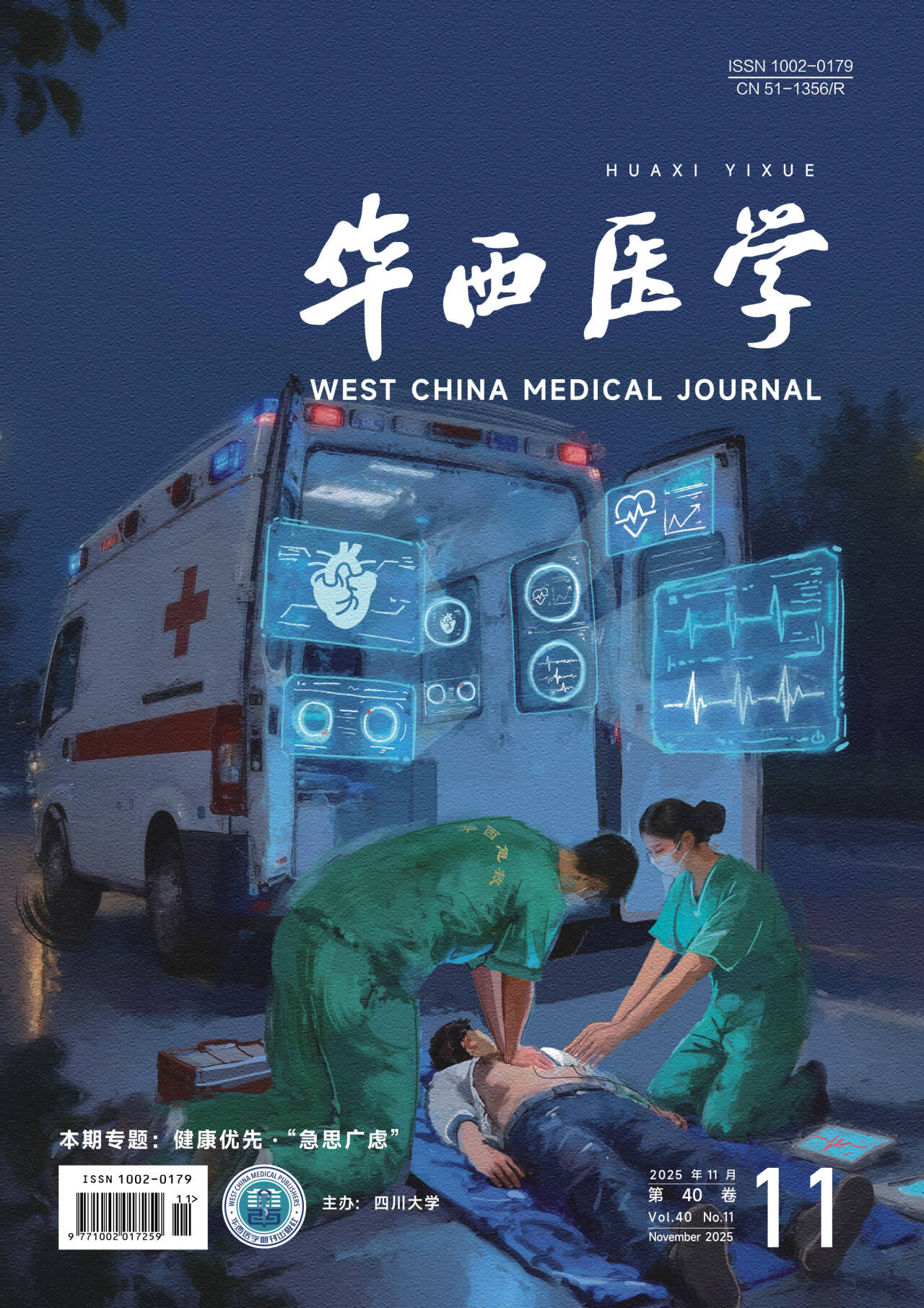【摘要】 目的 分析急性頸脊髓損傷后并發呼吸功能障礙的高危因素,以減少呼吸功能障礙發生,降低死亡率。 方法 對2002年7月-2006年8月收治的48例急性頸脊髓損傷患者,根據癱瘓程度、脊髓損傷平面、吸煙及年齡與呼吸功能障礙發生率的相關性,采用維持有效呼吸、頸部制動、減壓復位內固定等相關措施,減少頸脊髓損傷患者術后并發呼吸功能障礙的發生。 結果 22例發生呼吸功能障礙;9例死亡,其中7例死于呼吸衰竭,1例心跳驟停死亡,1例合并腦干損傷死亡。 結論 全癱、脊髓損傷平面高、吸煙、高齡是急性頸脊髓損傷并發呼吸功能障礙的高危因素,對高危患者氣管切開、呼吸機輔助呼吸態度應積極。
【Abstract】 Objective To analyze the high risk factors of respiratory obstacle after acute cervical spinal cord injury (SCI) and accept the measure more actively so as to decrease the respiratory obstacle occurrence and reduce the mortality rate. Methods A total of 48 patients from July 2002 to August 2006 were analyzed. According to the correlation among the paralyze degree,smoking, and age with the respiratory obstacle occurrence, we reduce the occurrence of respiratory obstacle in patients with spinal cord injury after the operation via obtaining the effective breath, neck retaining, etc. Results The respiratory obstacle was found in 22 cases; death in 9, in whom 7 died of respiratory failure, 1 of cardiac arrest, and 1 of brain stem hurt. Conclusions The whole palsy, higher level of the spinal cord injury, smoking, and advanced age are the high risk factors of respiratory obstacle after acute cervical SCI. The tracheostomy tube and the adjuvant respiration with the respirator should be accept aggressively for those high risk patients.
Citation: YING Zhengyu,HUANG Haifeng,SONG Jingang,CUI Yikun. Analysis of High Risk Factors of Respiratory Obstacle after Acute Cervical Spinal Cord Injury. West China Medical Journal, 2010, 25(10): 1817-1819. doi: Copy
Copyright ? the editorial department of West China Medical Journal of West China Medical Publisher. All rights reserved




